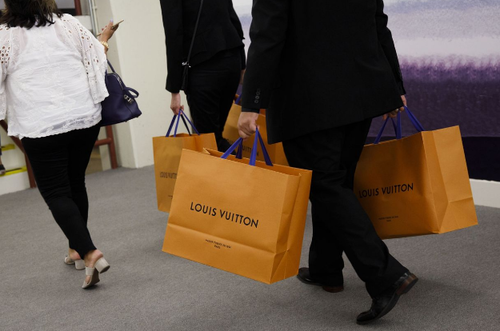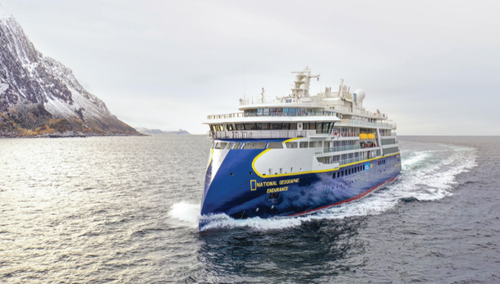Welcome To The “Post-COVID Luxury Spending Boom”
Now that the Covid panic is starting to subside, the “boom” is beginning. Especially in the luxury goods market.
The surge in spending is indicative of the tailwind that loosening lockdowns, combined with trillions of dollars in stimulus, has created.
One person experiencing the spending binge firsthand is travel agent Dottie Williford, who told The Washington Post that the company’s luxury offerings are being sold out first: “People don’t usually spend $20,000 to go to the Bahamas, but my clients are. The first things to sell out were the top category on the ship.”
As a result, businesses are going to start catering further to the wealthy, the report notes. This is due to the fact that the wealthiest Americans will be the driving force behind a lot of the recovery in retail spending.
As of now, “nearly 40 percent of overall consumer spending comes from the top fifth of earners — households that earn at least $120,000 a year,” WaPo notes. The bottom 20% of households account for just 9% of spending – and that gap is set to widen. The wealthiest 10% of Americans added more than $8 trillion to their net worth in 2020, despite the entire economy essentially shutting down and most of the country being in lockdown.
Raj Chetty, a professor of economics at Harvard University, said: “Higher-income folks are accumulating a lot of savings. They will spend more going forward and that will further create an incentive for companies to cater to higher-income folks even more.”
High income consumer spending is now 11% higher than pre-covid levels and consumer spending could grow at the fastest pace since 1946, the report notes. As a result, names like J.Crew and Uniqlo are specifically raising their price points heading into the new season, the report notes. Names like Gucci and Louis Vuitton are also raising prices.
Kayla Marci, a market analyst at retail-data firm EDITED, said: “Prices are rising. We’re also seeing these mass markets aligning their prices with luxury or expanding the offering of high-end products.”
The hospitality and travel indsutry is also feeling robust demand. Lindblad Expeditions, a cruise line that normally offers 35 day Antarctic cruises for $50,000 each, said it may expand into a “diverse high end travel aggregate” heading into 2021.
Its CEO, Sven Lindblad, said in April: “We are well-prepared to start up again. We have excellent financial reserves, a couple of new companies under our umbrella and a marketing machine that is vastly strengthened for growth.”
Similarly, Oceania Cruises’ 2023 world cruise, which is called “Around the World in 180 Days,” and costs between $46,000 and $160,000 per guest, sold out in a single day.
CEO Frank Del Rio said: “We believe this achievement, along with multiple booking records we have announced in recent months, demonstrates the pent-up demand that exists from our mature and affluent cruisers even for long and exotic voyages once the severe impact of the pandemic subsides.”
Robertico Croes, director of the Dick Pope Sr. Institute for Tourism Studies at the University of Central Florida, echoed the bullish sentiments for the industy: “The post pandemic will see a very strong movement toward the most affluent in terms of product development and services, and so on, compared to those who don’t have the affluence needed to engage in travel. Travel is inherently a luxury item.”
Additionally, live entertainment spending is up 60% this year, amusement park trips and recreation are up 54% this year and membership clubs are up 45% this year. Those three fastest growing categories are usually dominated by high income Americans.
Demand for second homes has also “more than doubled” during the pandemic and was up a scorching 178% in April and 48% in May.
If the post-Great Recession spending data is any indicator, the economic recovery could only be getting started:
In the five years after spending by the top 20 percent hit bottom during that recession, their share of all spending on care services such as day care, preschool and eldercare jumped 9 percentage points to 56 percent of overall spending in that area. The story was similar in education spending, such as college and private schools, as their share jumped 5 percentage points to 54 percent overall.
Discretionary spending by the top 20 percent on fun purchases like pets, toys and hobbies rose 3.4 percentage points to 38.5 percent of that overall category. In another category that includes hotels and vacation homes, where the top 20 percent were already dominant, they gained even more ground, reaching 59 percent of spending overall.
Tyler Durden
Wed, 06/30/2021 – 21:20
via ZeroHedge News https://ift.tt/2U92kul Tyler Durden

